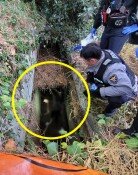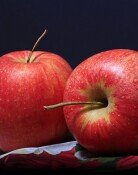Reclaimed Land is Plants’ `Silent War Zone`
Reclaimed Land is Plants’ `Silent War Zone`
Posted May. 23, 2001 09:47,
A reclaimed land can be easily considered as a `barren land` for vegetation.
Yet, it was revealed that a peculiar ecosystem was created in a sterile land
in which large vegetation could grow. In this land, native vegetation and naturalized plant can compete for survival. It is like blossoming of flowers in the `modern version of a barren land.`
Lee Eun-Joo, a professor at Seoul National University, and Kim Ki-Dae, a doctoral student, announced yesterday their research results on the plants of the reclaimed land. Kim Ki-Dae will soon publish a doctoral dissertation on the results of reclaimed land study.
The most peculiar `reclaimed land` is in Sanpaedong, Tongduchon in Kyungki Province. More taller plants exist there than any other reclaimed lands. Especially, the Cheanpodium Album is taller than 2 meters in height, topping a stature of a person. The Cheanpodium Album does not grow taller than 1 meter. Other plants, like Setaria Viridis have grown 50 percent taller than the normal size. Kim Ki-Dae said, `` I have a neck pain from having to constantly look up to examine the tall plants.``
The reason for the unusual growth is because of the nutrition contained in the garbage. The grasses are transplanted to the reclaimed land which is covered by dirt and pebbles after passing a certain time. However, since the land in Sangpaedong was not fully covered by dirt, the plants could grow by taking nutritions from the garbage. Those plants seem to enjoy an aristocratic life style compared with other plants on the sterile lands.
The competition between the naturalized plants and the native plants is fierce in a reclaimed land. Because there were no occupants in a reclaimed land, the hot competition could take place. The winner was decided according to the environment or the land’s nutrition condition.
If the reclaimed land was not far from an urban area or was very sterile, there have been more naturalized plants than native species because those naturalized species’ tenacity has made them tougher and more competitive.
On a reclaimed land in Paju, Kyungki Province, Ambrosia Trifida, a naturalized plant which can be commonly seen in Paju City, has occupied more than 90 percent of the whole land. A reclaimed land at Kyungseodong, Inchon City, was originally covered by Kunkimuituel, a native species. But Aster Subulatus, a naturalized plant that grows near sea shore, has rooted in here and there.
However, in a reclaimed land at Mojunri, Ichon, in Kyungki Province, and another land at Hasanundong, in Sungnam City, which are surrounded by hills, there are many willow trees. A soccer ground sized damp land has appeared in the reclaimed land in Pyungtaek, Kyungki Province, which has been made on a slope next to a bank. On that damp land, various kinds of native plant such as Scirpus Truqueter, Juacus Effusus, Cyperus Amuricus, and Miscanthus Sacchariflorus are growing. It means that the native plants can also prevail on a rich ground.
Tulip, Albizzia Julibrissia, and Ligustrum Obtusifolium grow well on the reclaimed lands. If those plants are transplanted on the reclaimed grounds, more various ecosystems seem to appear on the reclaimed grounds where Robinia Pseudo-Acacia are currently dominant. Yet, Ginkgo Biloba or Acer Palmatum Thunb immediately died or withered.
Professor Lee Eun-Joo said, ``In the U.S. a reclaimed land is covered with fallen leaves after covered by dirt.`` ``We should create the second ecosystem in which creatures can live well instead of just covering the land with dirt,`` she emphasized.
dream@donga.com







